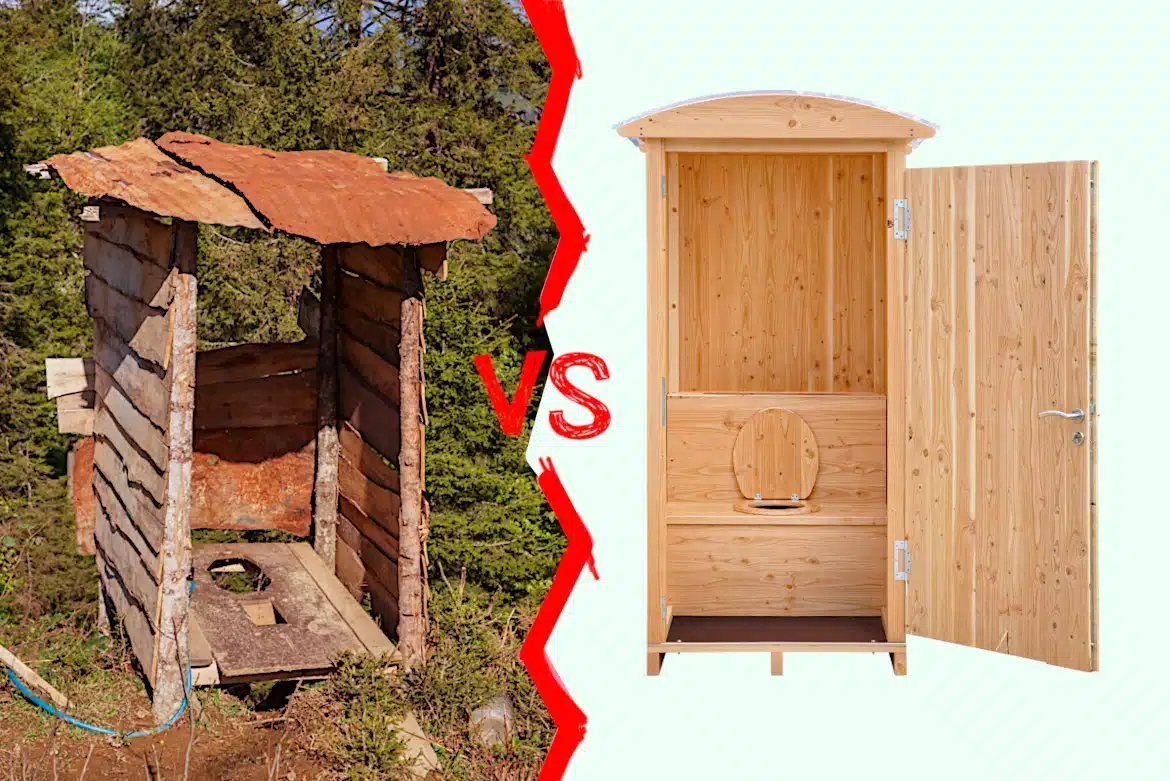The distinction between dry toilets and latrines is not always clear in people’s minds. The dry toilet is often visualized as the shed at the bottom of the garden, or even the hole in the ground.
The word toilet refers to a sanitary appliance, formerly known as a toilet seat. Today, it is also used to refer to a room known as a cabinet, or “little corner”.
In this article, we’ll try to understand and explain the differences between these two health tools.
Latrines and dry toilets are two sanitation solutions, one recent and the other historic. The oldest known latrines date back to the Indus Valley civilization, considered to be the first to have developed urban planning as early as 2600 BC.
Joseph Országh coined the term BLT or biolitter toilet. In 1992, in Liege (Belgium), he publicly presented the
he composting toilet
. he was one of the first scientists to focus on the scientific aspects of odor control with cellulose litter. (ref : https://www.eautarcie.org/05c.html)
Latrines mainly refer to the least advanced toilets, such as trenches and covered or uncovered holes in the ground. They are still widely used in developing countries and sometimes in rural areas of developed countries. They consist of a pit dug into the ground, which can be covered by a wooden, sheet metal or plastic shelter. Dejecta is collected in the pit and left to decompose naturally over time. Generating anaerobic (airless) fermentation, these toilets were smelly and highly polluting. Can pose public health problems, contaminating groundwater and spreading disease.
Dry toilets are a more hygienic and sustainable alternative to latrines. They are also known as compost toilets. These toilets are designed to collect urine and faeces in a bedding of organic matter such as wood shavings, straw or leaves. Litter absorbs liquids and covers waste, reducing odours and the risk of contamination. The composting process occurs as litter absorbs moisture from waste and micro-organisms break down organic matter. Controlled bio-litter dry toilets produce nutrient-rich compost that can be used to fertilize gardens and fields.
Compared with latrines, dry toilets with bio-controlled bedding offer several advantages. They are more hygienic, as they reduce the risk of groundwater contamination and the spread of disease. They are also more sustainable, as they recover “human waste” to produce nutrient-rich compost that can be used to fertilize the soil. Dry toilets with controlled organic litter are also more ecological, as they don’t require water consumption to evacuate waste.
Reticence towards dry toilets is partly cultural. Sweden is far ahead in this respect, so much so that the municipality of Tanum (12,000 inhabitants, surface area: 2,351 km²) has banned the installation of conventional toilets in its municipality since January 2002. Today, it no longer issues building permits if the house does not include a dry toilet.
In conclusion, dry toilets with controlled organic litter are a sustainable and hygienic alternative. They offer significant advantages in terms of public health, sustainability and environmental impact.
